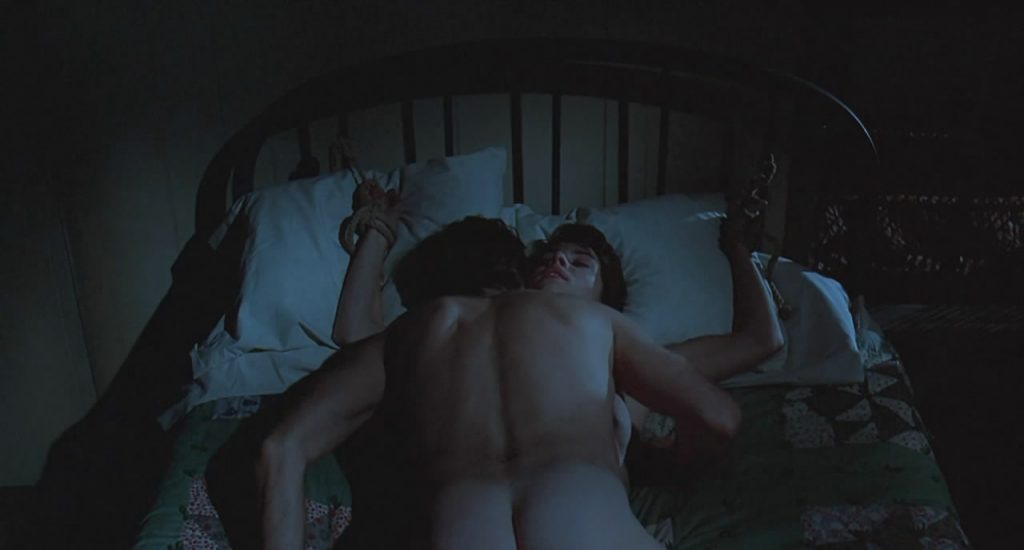
As director Paul Schrader points out in an interview on the Shout! Factory release of his film Cat People (1982) that a majority of his films, which he either wrote and directed or otherwise, end with a climatic scene of self destructive martyrdom. Consider his best-known works, consisting of five screenplays for director Martin Scorsese including Taxi Driver (1976), The Last Temptation Of Christ (1988) and Bringing Out The Dead (1998), and it becomes almost impossible to argue against this self-confessed trend. But unlike these narratives, the narrative to Cat People takes the concept of martyrdom into the darkest regions of human violence and fetishism, effectively vilifying the film’s protagonist in the eyes of the audience just as the film reaches its climax.
Overall, Cat People is a masterful exercise in filmmaking and in particular its approach to subverting its genre; the fantasy horror film. Again and again Schrader successfully negates cliché and predictability while maintaining enough seriousness to keep the viewer engaged on more then just a superficial level. It is, however, with the aforementioned climax to the film that Schrader drastically shifts the tone of the film and the perceptions of his audience with it.
By the end of Cat People Oliver (John Heard) is issued an ultimatum by his “cat person” lover Irena (Nastassja Kinski); he can either kill her or make love to her. The latter choice will transform Irena back into a black panther which he can cage in his zoo. Being a compassionate character, Oliver opts to have intercourse with Irena. But to control her after her transformation he ties her arms and legs to bedposts. This act of bondage is made doubly significant by the fact that this is the first time they have intercourse and Oliver is aware of the fact that by penetrating her she will quickly thereafter transform.
Irena’s martyrdom is sexual in nature. If she isn’t killed or transformed into a cat and caged she will have to kill again and again. To save countless lives Irena must submit to intercourse with Oliver. Yet, Schrader’s depiction of this act of intercourse is neither romantic nor violent in the way that an audience would be able to anticipate given the film’s familiar genre. If one breaks the sequence down into its primary visual signifiers a few things become apparent. For starters, the act of binding Irena to the bed displays to the audience Oliver’s dominance over his female counterpart as well as her willing submissiveness. Likewise, the same images of Irena’s hands being tied draw a parallel subtext to the same signifier, this time alluding to the audience and Oliver’s objectification of Irena as a sexual object and not a multi-dimensional character or person. This allusion is hinted at throughout the film by Schrader in both characters’ dialogue and in the construction of sequences. As a director Schrader is careful to bring all of his thematic explorations to climax at once in the film’s final conflict. Yet, the most troubling signifier occurs in the shot reverse shot progression between Oliver looking at a bound Irena and Irena looking back at him once he has stripped naked and prepares to mount and penetrate her. This slow progression of shots not only serves to build tension, but also gives the audience time to recognize Oliver’s zoophilia. In the reverse shots of Irena she is lit so that her eyes resemble those of a panther, recalling the time she transformed before and all of the times her homicidal brother made his transformation before his death earlier in the film. The correlation of all of these signifiers is then amplified by the resurgence of the film’s theme on the soundtrack.
It is in this way that the audience, confronted by so many uncomfortable themes of sexuality, and what are for most viewed as perversions and depravities, perceives a violence that is more thematic than physical in the final scene. After all, by the conclusion of the scene it is obvious that Irena’s martyrdom was not simply to submit to Oliver’s act of penetration, but to his physical dominance and control, his objectification and ultimately his fetishism of her as a dual human and animal. The scene is effective in transposing the element of violence from Irena to Oliver, and Oliver’s heroism in turn onto Irena. The antithesis to this reading, and the reason why the abrupt change in character representations is so effective, is the first sex scene between Irena and Oliver that takes place earlier in the film. This first sex scene is devoid of any potent signifiers that are representative of anything other than the standard audience voyeurism, and can therefore be interpreted as an act of genuine love making between the two characters.
In terms of technical achievement and textual complexity Cat People remains a crucial stepping-stone to Schrader’s development as a film director that has sadly been overlooked more often than not. Perhaps this is due to Universal Studios presentation of the film as a remake of the Val Lewton and Jacques Tourneur original from 1942, a conundrum Schrader openly resents, maintaining that he never intended the film as a remake, having preferred to issue the film with a different title.
